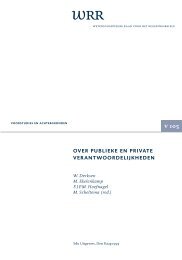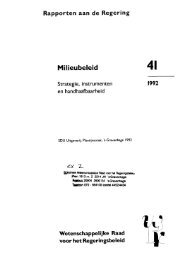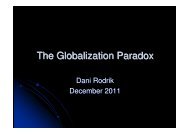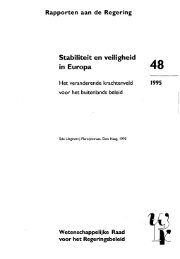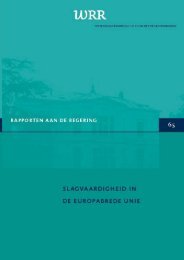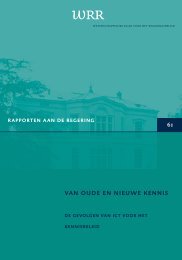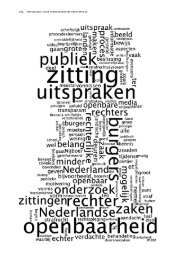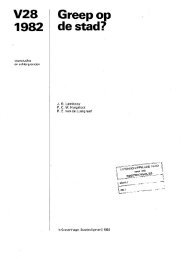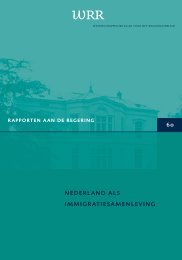De overheid als keuzearchitect? - Wetenschappelijke Raad voor het ...
De overheid als keuzearchitect? - Wetenschappelijke Raad voor het ...
De overheid als keuzearchitect? - Wetenschappelijke Raad voor het ...
Create successful ePaper yourself
Turn your PDF publications into a flip-book with our unique Google optimized e-Paper software.
de ov er heid a l s k eu z e a rchi t ec t<br />
One of the problems people have in hospit<strong>als</strong> is what is called the<br />
‘central line infection’. When a central line is inserted, there are<br />
certain procedures that should be followed. If they are followed then<br />
everything is fine, but if they are not followed then there can be an<br />
infection. These infections kill people and cost tons of money. It has<br />
been shown that if they follow a simple checklist in the operating<br />
room, you can reduce these infection rates to zero. Interestingly, one<br />
of the items on the checklist is that nurses are given permission to<br />
remind the doctors to wash their hands. Hand washing is key. Covering<br />
up the body except for where the line is going in, is another key.<br />
Arming the nurses to remind the doctors to follow the rules, is one of<br />
the things on the checklist. There is no excuse for any hospital not to<br />
adopt these procedures, but many don’t.<br />
18<br />
Here is something that I have been pushing a lot since the book came<br />
out. It sounds quite boring but I think is actually quite important.<br />
The idea is to change the way we do disclosure. I still have to learn the<br />
way it works here, but in the us if I get a credit card, I get 30 pages of<br />
fine print telling me all the rules of that credit card, which I presume<br />
no one has ever read. Now what we are suggesting is to supplement<br />
that with an electronic disclosure. The way it would work is that once<br />
a year you would get an email with a file with two types of information.<br />
One is your usage data: it will tell how you have used that credit<br />
card for the last year. The other would be essentially a spreadsheet of<br />
all the ways that credit card can charge you for things. You could use<br />
this for credit cards, for mortgages, for cell phones – it is a perfectly<br />
general idea. Now it is not that we think any human would open<br />
those files. But we think that in one click they are able to upload the<br />
file to third-party websites, and that would help them shop and turn<br />
humans into econs as shoppers. When we wrote this book, these<br />
websites would emerge, they have already emerged.<br />
Here is another example. There is a website in the us that is called<br />
Billshrink.com. It helps people to find a good mobile calling plan.<br />
You could use the same system for credit cards. One of the principles<br />
that I stress is that we as consumers should have the right to our own<br />
usage data. The suppliers have it, they know how many calls we have<br />
made, how many text messages we have sent, how many emails.



